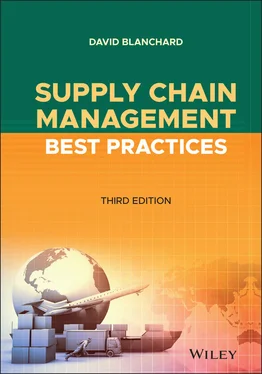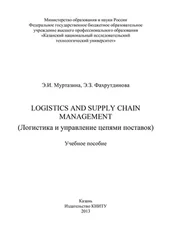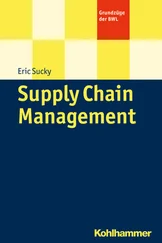1 ...8 9 10 12 13 14 ...17 Wengel oversees a global supply chain that has 300,000 SKUs, services 250,000 customers, places 100,000 orders per day, and involves nearly 100 manufacturing facilities and more than 300 distribution centers. Under Wengel, J&J's supply chain group works with the company's R&D department on strategies to innovate, make, test, and deliver every product the company develops. As she explains, the supply chain group's efforts aren't just based on where to locate factories or how to optimize the company's logistics networks, but include strategizing on how technology will help change J&J's innovation capabilities.
For instance, the company's vision care business is using IoT technology to manufacture contact lenses using one-third the production space, and at twice the rate as previously. J&J is also using IoT to enhance its tracking and tracing capabilities throughout the supply chain by gathering data at any stage of a product's lifecycle, from its raw material origins through the manufacturing process, into a package, onto a truck, delivered to a hospital, and scanned into an inventory system.
“IoT gives us the ability to make decisions on real-time data in an industry that has often used separate testing that happens over days or weeks,” Wengel says. IoT provides J&J the reassurance that each node of the supply chain is where it should be and is arriving when it needs to be there.
One of the selling points of IoT technology is its ability to have machines “talk” to each other, and to that end the company is able to use data collected by machinery in one of its facilities to produce an HIV medication by using an integrated quality process. “This process,” Wengel explains, “collects and aggregates data in real time and then processes it using online multivariate analysis and machine learning. This enables us to make process corrections in real time so that we produce only acceptable product, enhance its quality, and improve speed and efficiency.” 24
As one of the world's Top 25 supply chains (at least, according to analyst group Gartner), J&J's supply chain efforts are focused on three areas: fast-track product innovation; supporting omni-channel distribution, regional shifts, and delivery to final destination; and developing well-segmented end-to-end supply chains. 25
“Technology is dramatically changing the landscape of what's possible for us—in how we can approach problems of global health through Big Data and analytics and being able to look at patient populations in different ways, all the way through to how we design smart products that use technology on an ongoing basis to improve the patient or the customer outcome,” Wengel explains. 26
Retail: It's Amazon's World—We're Just Shopping in It
How does a company that launched as recently as the mid-1990s on a simple model of selling books via a website rather than through traditional brick-and-mortar retail stores wind up as the most valuable brand in the world, dominating not just in online retailing of virtually every product imaginable, but also in online streaming (movies, music, TV), electronic devices (e-readers, smart speakers), groceries (both online and brick-and-mortar), cloud services, book publishing, and even logistics? How is it possible for a company in a niche that barely existed just a generation ago to grow so much in stature that it's now responsible for half of the $500 billion e-commerce market in the United States? How does an unknown company go from ground zero to displacing the biggest 800-pound-gorilla—Walmart—as the most valuable retailer in the world (at least as far as market cap)? 27
Of course we're talking about Amazon, and the answer is simple: technology, specifically supply chain technology. Amazon's meteoric rise to the top came by following the same basic playbook Walmart followed in its own ascendancy: leveraging logistics and supply chain technology to reshape the entire retail landscape in their own image. Amazon's first big foray into technology came in 2012 when it paid $775 million (which was considered a risky investment at the time but seems like quite the bargain now) to acquire Kiva Systems, a manufacturer of warehouse robots. By 2020, Amazon had more than 200,000 robots deployed throughout its warehouses and fulfillment centers. Also by 2020, the company had been approved by the Federal Aviation Administration to operate its Prime Air fleet of delivery drones, signaling the beginning of Amazon's trial runs of customer deliveries via drone.
Just as Walmart reinvented retail best practices when it started opening stores in small towns and locating regional distribution centers close to its stores, Amazon is taking that basic concept and adding its own spin to it: Rather than opening stores in cities and towns both big and small, Amazon just keeps building more warehouses. Flush with the unprecedented demand for its services in the wake of the COVID-19 pandemic, the online retail giant announced plans to open 1,000 warehouses that would be closer to neighborhoods (rather than locating them on the outskirts of towns, where most distribution facilities tend to be found).
“Amazon is winning mind-share and wallet-share by making shopping convenient, easy, and frictionless for customers,” says Russ Meller, vice president, solution design and research and development with consulting firm Fortna. “They are shifting customer expectations around convenience, speed, price, and selection. They're moving e-commerce away from the store, computer, and the phone, and integrating it seamlessly in our lives. All you have to do is ‘just ask’ Alexa,” Amazon's voice-activated device that makes ordering a product from the retailer as simple as just saying it out loud. Powering Alexa, Meller explains, is “an artificial intelligence engine and platform for commerce that could eliminate brand from the equation and stack the deck in favor of Amazon's private label offerings.” 28
1 1Jill Jusko, “Building a Better Supply Chain,” IndustryWeek (August 2009), 26–28.
2 2 www.seattlepi.com/boeing/787/787primer.asp.
3 3John Teresko, “The Boeing 787: A Matter of Materials,” IndustryWeek (December 2007), 34–38.
4 4Stephen C. Rogers, The Supply-Based Advantage (New York: Amacom, 2009), 144–148.
5 5Suman Sarkar, The Supply Chain Revolution (New York: Amacom, 2017), 42.
6 6Natalie Kitroeff and David Gelles, “Claims of Shoddy Production Draw Scrutiny to a Second Boeing Jet,” The New York Times (20 April 2019), www.nytimes.com.
7 7Helen L. Richardson, “Building a Better Supply Chain,” Logistics Today (April 2005), 17–25.
8 8Bob Herzog spoke at the Kinexions 2019 conference (16 October 2019), video posted at www.kinaxis.com.
9 9John Langley Jr. and Infosys, 2020 Third-Party Logistics Study: The State of Logistics Outsourcing (University Park, PA: Penn State University, 2020), 9.
10 10David Blanchard, “Inbound for Glory,” Supply Chain Technology News (April 2003), 1, 11.
11 11Steve Banker, “Land O'Lakes Uses Visibility and Velocity to Combat Supply Chain Variability,” Forbes (1 November 2019), www.forbes.com.
12 12 www.uber.com.
13 13“Health Care Costs 101: US Spending Growth Relatively Steady in 2018,” California Health Care Foundation (May 2020), www.chcf.org.
14 14David Blanchard, “Leaning into the Supply Chain,” IndustryWeek (September 2014), 24–28.
15 15Sundiatu Dixon-Fyle, Kevin Dolan, Vivian Hunt, et al., “Diversity Wins: How Inclusion Matters,” McKinsey & Company (19 May 2020), www.mckinsey.com.
16 16David Blanchard, “Top 25 Supply Chains of 2017,” IndustryWeek (19 June 2017), www.industryweek.com.
17 17Steve Minter, “Will Millennials Change Manufacturing?” Industry Week (28 December 2017), www.industryweek.com.
Читать дальше












